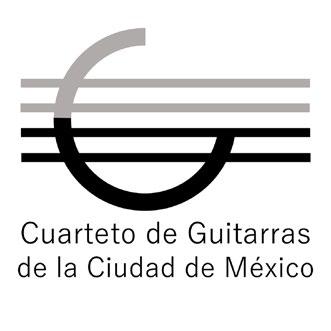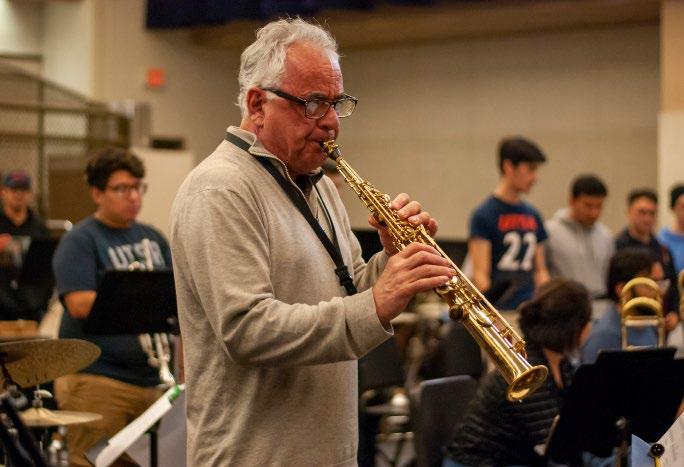

C u a r t e t o d e G u i t a r r a s d e l a C i u d a d d e M é x i c o

S o n e s y D a n z o n e s d e B u e n a M a d e r a ’ s
1 0 t h a n n i v e r s a r y


La Bruja Public domain
Arr. Tomás Barreiro
Elodia
Huapango
La Sandunga
Nereidas
Sones de Mariachi
Luis G. Jordá (1869-1951)
Arr. Enrico Chapela
José Pablo Moncayo (1912-1958)
Arr. Arístides Labadie
Máximo R. Ortiz (1816-1855)
Arr. Joaquín Olivares/Tomás Barreiro
Amador Pérez (1902-1976)
Arr. Julio César Oliva
Blas Galindo (1910-1993)
Arr. Gerardo Tamez
La Llorona Public domain
Arr. Tomás Barreiro
Guateque
Danzón 2
Cuarteto de Guitarras de la Ciudad de México
Manuel M. Ponce (1882-1948)
Arr. José L. Segura
Arturo Márquez (b. 1950)
Arr. Alberto Sánchez
César Lara, Sayil López, Joaquín Olivares y José Luis Segura, guitars
This concert is possible due to a subvention granted by Sistema de Apoyos a la Creación y Proyectos Culturales of Mexico



Cuarteto de Guitarras de la Ciudad de México was formed in 2001 with the very purpose of performing contemporary Mexican music originally written for four guitars. Throughout its career, the quartet has performed in concert all over Mexico as well as in different countries in Europe and Latin America, within some of the most important festivals, which have included the world premiere of music dedicated to the quartet.
Apart from this, the quartet has made various broadcastings for several Mexican cultural radio and television channels. In 2011, as part of the celebration for its tenth anniversary, the quartet made the premiere in Mexico of Interchange, the concerto for guitar quartet and orchestra composed by Brazilian composer Sergio Assad.
Cuarteto de Guitarras de la Ciudad de México has published three recordings that have in common that each one of the pieces or arrangements they contain were commissioned by the ensemble to form interesting programs that contribute to the repertoire of this chamber formation. Jícamo a 4 (Urtext Digital Classics, 2005) has original music composed by five renowned composer-guitarists (Ernesto García de León, Juan Helguera, Julio César Oliva, Jorge Ritter and Gerardo Tamez). On the same page, ...a cinco (Clave Producciones, 2013) includes five chamber pieces for guitar quartet and a guest instrument (flute, voice, percussion, clarinet and live electronics) composed by Samuel Zyman, Jorge Sosa, Marcela Rodríguez, Jorge Ritter and Sabina Covarrubias. On the other hand, Sones y Danzones de Buena Madera (Tempus Clásico, 2014) is a showcase for Mexican music of traditional origin with brilliant arrangements for guitar quartet of popular sones jarochos, sones istmeños, and danzones, as well as symphonic music written by some of the most renowned Nationalist composers (such as José Pablo Moncayo, Blas Galindo and Arturo Márquez) which were also performed with twelve guitars made with Mexican endemic woods built by Abel García López, one of the most recognized luthiers in Mexico and worldwide. Speaking of this last production
In 2024 the quartet is celebrating the tenth anniversary of the release of Sones y Danzones de Buena Madera with a concert tour in Texas and Louisiana supported by the Sistema de Apoyos a la Creación y Proyectos Culturales of the Mexican Government.

Along with its wide gastronomic diversity, Mexico’s music is one of its most distinctive features, as it serves as a social and cultural catalyzer, despite the variety of styles represented by the diversity of the groups that inhabit its vast territory. Of all the genres that depicts the Mexican soundscape, son and danzón stand out as appropriations of the cultural elements imprinted in the popular taste of the countryside and the city respectively. Of course, the echoes of these genres have reached the ears and pens of academic composers, who have stylized them and put them in the voice of many orchestras, in large-format creations. In its program Sones y Danzones de Buena Madera, we can hear the sounds that have echoed in the dance halls, in the fandangos and in the main concert halls of our country, in an adaptation for guitar quartet which gives back to many of these pieces that intimate sound and familiarity that characterizes this repertoire. Thus, in this program we can hear how traditional songs such as La bruja, La Sandunga and La Llorona, coexist with José Pablo Moncayo’s Huapango, Blas Galindo’s Sones de Mariachi and Arturo Márquez’s Danzón 2, having inbetween lovely danzones such as Elodia by Luis G. Jordá, Guateque by Manuel M. Ponce and Nereidas by Amador Pérez Torres.





MAKE A BOLD IMPACT
The UTSA School of Music has made incredible strides in providing a high-quality music education for all of our students and being a cultural arts center for the city of San Antonio.
You can help us continue to elevate the quality of our program by making a gift to the School of Music. Our donors have made an invaluable impact through scholarships and funding research, innovative academic programs, outreach activities, and beyond.
Donations have also contributed to our ability to offer public enrichment activities such as Maestria, En Vivo, the Insitute for Music Research lecture series, and On-Corps, our free music program for U.S. veterans.
HOW TO GIVE
Gifts can be made via the secure online donation form. Select “Friends of Music” in the designation dropdown.
For more information on how to make a gift, visit https://colfa.utsa.edu/music/giving

En Vivo brings high-caliber artists from all over the world to our university for free public concerts and masterclasses for our students.

On-Corps engages the community by offering U.S. veterans free music lessons and the opportunity to perform in a concert band ensemble.







